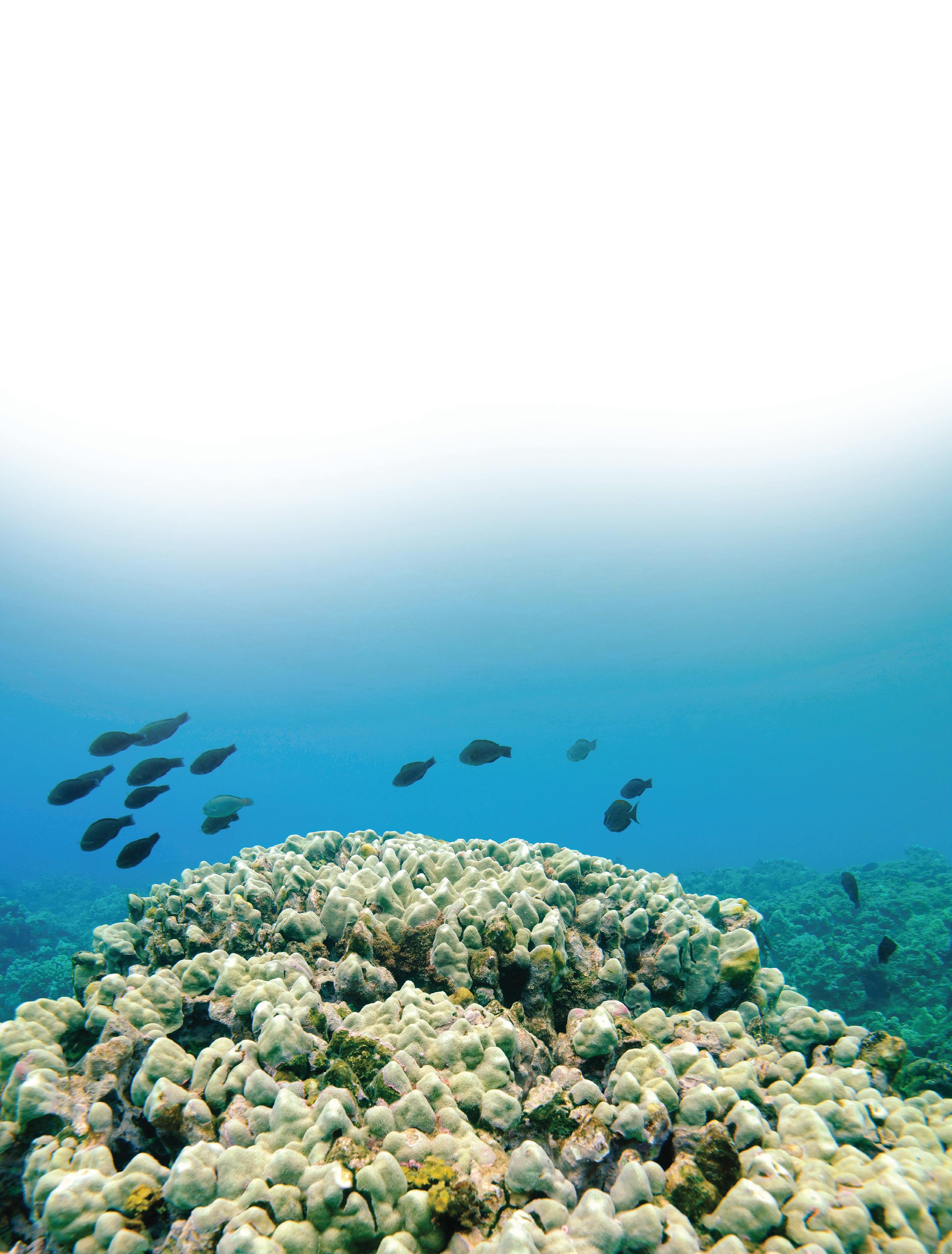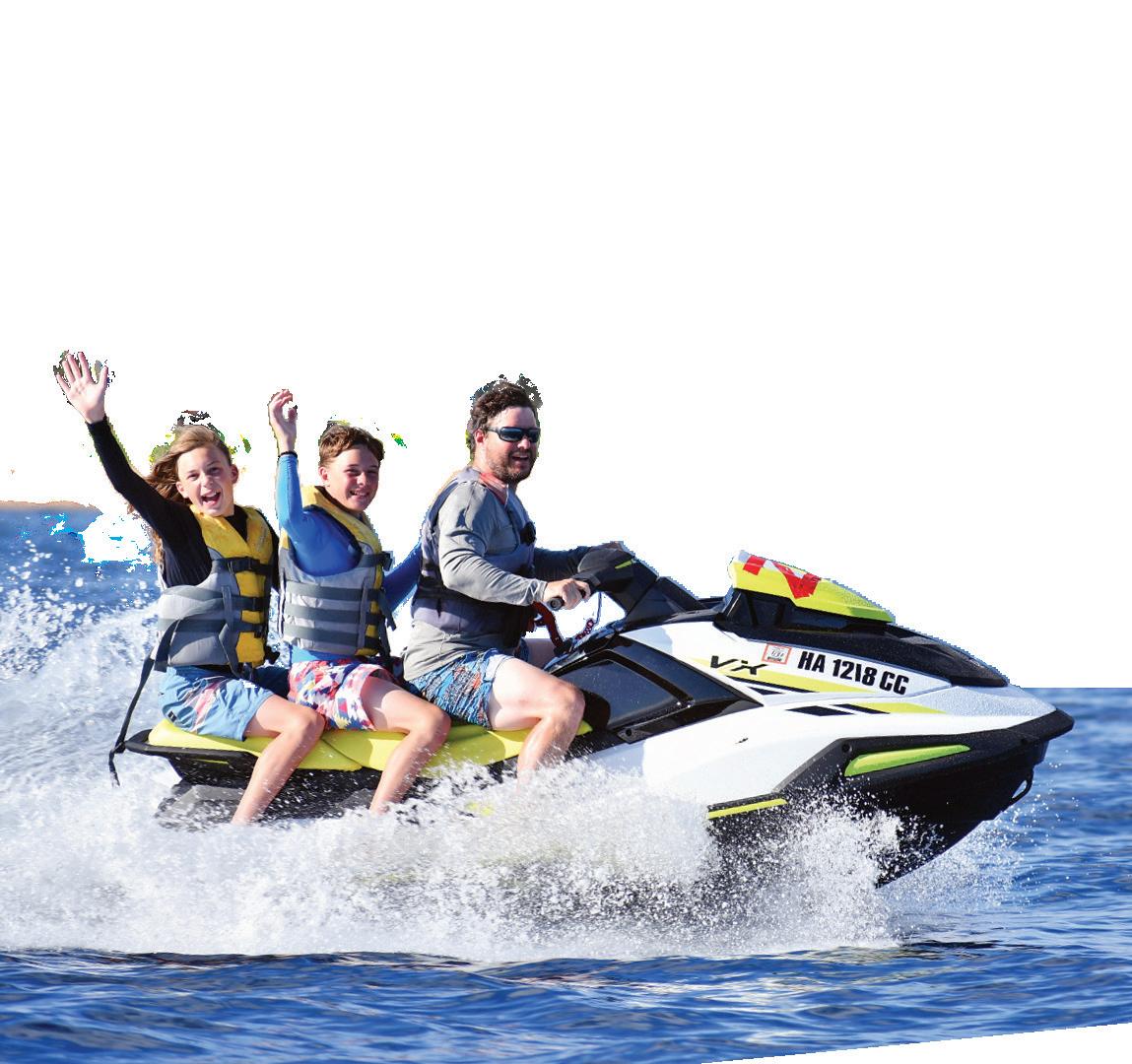
1 minute read
Coral Continuity
by Serene Gunnison
From Kahekili Beach to Pu‘u Keka‘a, mounds of golden lobe coral and ragged, multi-hued cauliflower coral bloom from the seafloor. These shimmery underwater gardens awaken wonder in the thousands of snorkelers who explore Kā‘anapali’s waters each year. But these reefs provide more than just a pretty picture, and they’re more vital than you might imagine.
According to a study by the United States Geological Survey, The Nature Conservancy and the University of California Santa Cruz, coral reefs provide Maui County with $376 million in flood protection each year. Coral reefs act as underwater breakwaters, breaking waves offshore and preventing powerful open ocean surges from barreling into our shorelines.
Coral reefs are also essential for sustenance in Hawai‘i. Many people in the islands rely heavily on the reef’s bounty to feed their families, and the allure of coral reefs injects over $800 million into Hawaii’s economy annually through tourism.
Unfortunately, corals on Maui and around the world are facing myriad challenges. The most insidious of threats is rising ocean temperatures, which can cause corals to “bleach” – a term used when corals lose their color. When ocean temperatures become too high, coral polyps expel microscopic algae from their tissues. This microscopic alga is the polyps’ primary food source and is responsible for giving corals their vibrant color. Without algae, corals turn bone-white and become vulnerable to disease and death. While keeping rising ocean temperatures at bay is beyond our individual control, our choices can affect how corals recover from bleaching – including our choice of sunscreen. In 2022, Maui County made history by outlawing all chemical-based sunscreens, which have been found to cause death in juvenile corals and hamper tissue recovery in adult corals.
Today, mineral-based sunscreens containing non-nano zinc oxide or non-nano titanium dioxide are the only sunscreens approved for sale, distribution and use in Maui County. Beachgoers are also encouraged to wear sun-protective clothing and visit beaches during less sun-intense times to curb their sunscreen use. Along with using mineral-based sunscreen, you can help preserve Maui’s reefs by avoiding touching or walking on corals.
Next time you snorkel at Kā‘anapali, take a moment to admire the corals’ underwater glory, their indispensable place in Hawaiian life and the biodiversity they support. With everyone’s help and care, Kā‘anapali’s vibrant reefs will exist in perpetuity. Learn more at mauireefs.org
Locals and visitors alike wear only mineral-based sunscreen on Maui. In 2022, Maui County banned the sale, use and distribution of chemical sunscreens, which are known to cause death in juvenile corals.














